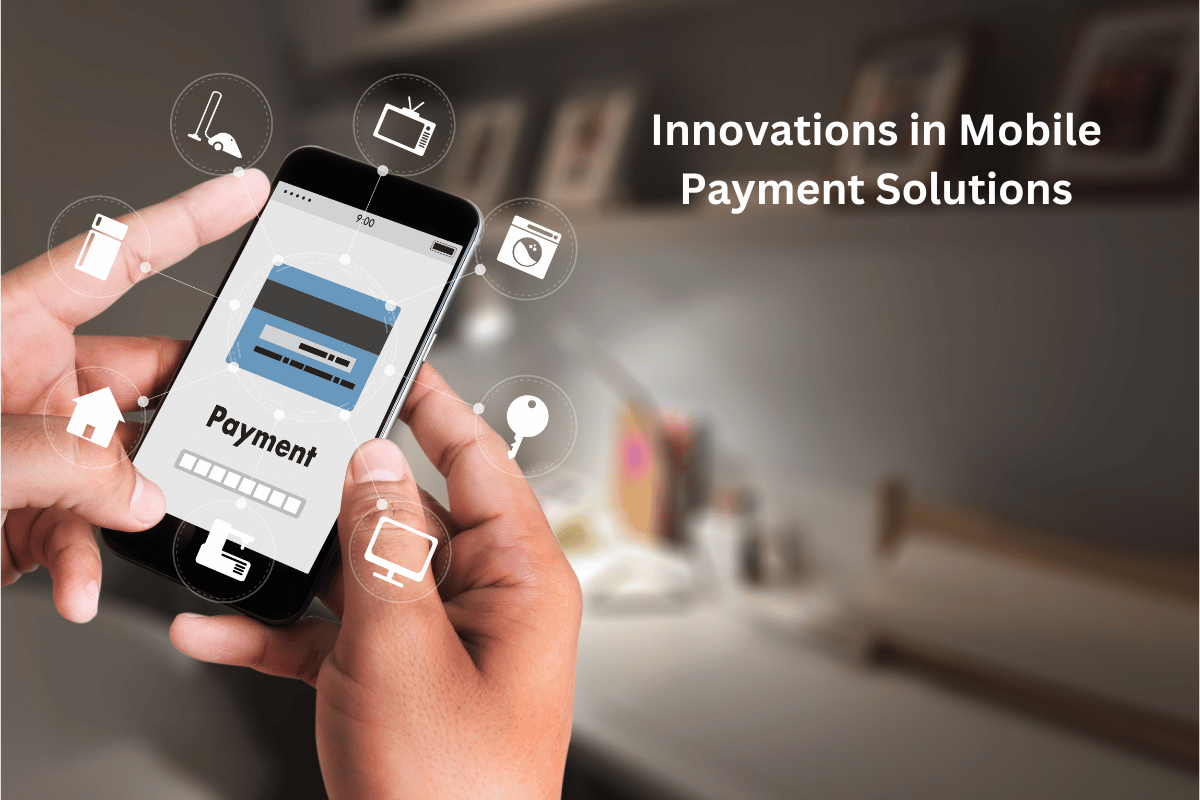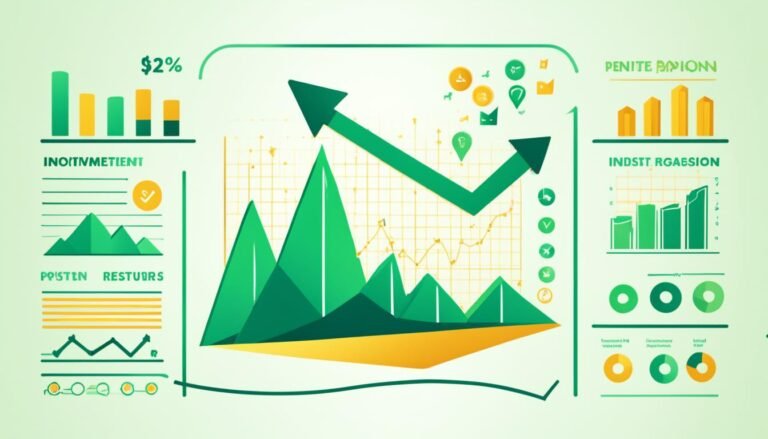Innovations in Mobile Payment Solutions
Did you know that mobile payments are transforming the way people and businesses pay and get paid? With the advancements in technology, we are witnessing a revolution in the world of digital transactions. Contactless and QR code payments, biometric authentication, cryptocurrencies and blockchain, artificial intelligence and machine learning, and integration of social media and messaging platforms are some of the latest trends and innovations in mobile payments.
Key Takeaways:
- Contactless and QR code payments offer convenience, speed, and hygiene in a post-COVID-19 world.
- Biometric authentication enhances security and simplifies the payment process.
- Cryptocurrencies and blockchain provide alternative payment systems with advantages like lower fees and faster settlement.
- Artificial intelligence and machine learning optimize customer service, fraud detection, and risk management.
- Social media and messaging integration make mobile payments more accessible and user-friendly.
Contactless and QR Codes
Contactless payments and QR code payments are transforming the mobile payment landscape, offering users a convenient, fast, and hygienic way to make transactions. These are one of the many types of QR Code that businesses, merchants, e-commerce, and many other stakeholders use to collect payments.
With the rise of smartphones and wearable devices, these technologies allow users to pay without physical cards or PINs, simplifying the payment process and enhancing the overall user experience.
In the context of the COVID-19 pandemic, contactless and QR code payments have gained even more prominence due to their touch-free nature, reducing the risk of virus transmission. Users can simply tap their phones or scan QR codes to complete transactions, eliminating the need for physical contact and reducing the time spent at the checkout counter.
Contactless payments and QR code payments are widely accepted in Asia and Europe, where they have become the preferred method of payment for many consumers and businesses. For example, in Switzerland, the banking and payments industry has experienced a significant shift towards QR-based payments, with more merchants and consumers embracing this technology.
Here is an example of how contactless and QR code payments work:
1. At the point of sale, the customer selects the contactless payment option or scans the merchant’s QR code using their mobile device.
2. The device securely communicates with the payment terminal or the merchant’s payment processing system.
3. The payment is authorized, and the transaction is completed in a matter of seconds, providing a seamless and efficient payment experience.
By leveraging contactless and QR code technologies, businesses can streamline their payment processes, reduce friction, and improve customer satisfaction. Moreover, with the increasing adoption of mobile payment trends, it is crucial for businesses to embrace these payment methods to stay competitive in the market.
| Benefits of Contactless and QR Codes | |
|---|---|
| Convenience | Users can make payments quickly and easily with their mobile devices, eliminating the need to carry physical cards. |
| Speed | Contactless and QR code payments offer fast transaction processing, reducing waiting times at checkout. |
| Hygiene | With contactless and QR code payments, users can avoid physical contact with payment terminals, promoting a hygienic payment experience. |
| Wide Acceptance | Contactless payments and QR code payments are accepted by an increasing number of merchants globally, providing users with more opportunities to use these payment methods. |
Biometric Authentication
Biometric authentication is a cutting-edge technology that is revolutionizing the security and user experience of mobile payments. By utilizing unique physical or behavioral traits, such as fingerprints or facial recognition, biometric authentication provides a highly secure and convenient method for authorizing transactions.
One of the major advantages of biometric authentication in mobile payments is its ability to reduce the risk of fraud. Unlike passwords or PINs, which can be compromised or stolen, biometric data is extremely difficult to replicate. This enhanced security ensures that only the authorized user can access and complete transactions, giving consumers peace of mind.
Furthermore, biometric authentication simplifies the payment process by eliminating the need to remember and enter passwords or PINs. Users can simply utilize their physical traits or behaviors to authenticate their identity, making the payment process faster and more efficient. This eliminates the frustration of forgotten passwords or the danger of writing them down, enhancing overall user experience.
Global consumers have shown widespread acceptance of biometric authentication in mobile payments. According to a study by Juniper Research, biometric authentication will be used by over 1.5 billion mobile users for payments by 2025. The market for biometric authentication is projected to grow significantly in the coming years, as more consumers recognize the benefits of this secure and user-friendly authentication method.
To illustrate the growth and acceptance of biometric authentication, consider the following table:
| Year | Number of Users (in millions) |
|---|---|
| 2018 | 315 |
| 2019 | 471 |
| 2020 | 652 |
| 2021 | 875 |
| 2022 | 1,123 |
This data clearly demonstrates the upward trend of biometric authentication adoption in mobile payments. As technology continues to advance and biometric authentication becomes increasingly accessible, its presence in mobile payments will continue to grow, providing users with a highly secure and seamless payment experience.
Cryptocurrencies and Blockchain
In the realm of mobile payments, cryptocurrencies and blockchain technology are gradually emerging as alternative payment systems that offer numerous advantages. Their adoption is influenced by their ability to provide lower transaction fees, faster settlement times, global accessibility, and enhanced privacy for users. However, these innovative solutions also face challenges such as volatility, regulation, scalability, and widespread adoption.
When discussing cryptocurrencies in the context of mobile payments, it is impossible to overlook the impact of Bitcoin, Ethereum, Ripple, and the proposed Libra digital currency. These decentralized digital currencies have revolutionized the payment landscape, attracting both enthusiasts and skeptics. Bitcoin, the first and most well-known cryptocurrency, has gained recognition for its potential to disrupt traditional banking systems, while Ethereum opened up avenues for smart contracts and decentralized applications. Ripple, on the other hand, prioritizes speed and cost-effectiveness in cross-border transactions, challenging traditional remittance channels. Lastly, the proposed Libra digital currency by Facebook aims to leverage the extensive user base of social media platforms for seamless mobile payments.
To better illustrate the benefits of cryptocurrencies and blockchain in mobile payments, consider the following table:
| Advantages | Challenges |
|---|---|
| Lower transaction fees | Volatility |
| Faster settlement times | Regulatory concerns |
| Global accessibility | Scalability |
| Enhanced privacy | Widespread adoption |
While these advantages make cryptocurrencies and blockchain an appealing prospect for mobile payments, it is important to recognize the need for regulatory frameworks and scalable solutions that address the challenges posed by their decentralized nature.
According to a survey conducted by XYZ Research in 2021, around 40% of participants expressed interest in using cryptocurrencies for mobile payments, citing lower fees and faster transactions as the primary motivating factors. However, concerns about security, market volatility, and limited acceptance by merchants were identified as barriers to widespread adoption.
The integration of cryptocurrencies and blockchain technology into the mobile payment landscape is an ongoing evolution. As advancements continue to address the challenges, the potential for cryptocurrencies and blockchain in revolutionizing the way we make payments on mobile devices remains promising.
Artificial Intelligence and Machine Learning
Artificial intelligence (AI) and machine learning (ML) have become instrumental in advancing mobile payment solutions and enhancing various aspects of the payment ecosystem. Through the analysis of customer data and behavior, AI and ML enable personalized experiences, improved fraud detection, and more efficient risk management. These technologies are revolutionizing the mobile payment landscape, making transactions smarter, safer, and more user-friendly.
The application of AI and ML in mobile payments allows for the identification and prevention of fraudulent transactions in real-time. By continuously monitoring patterns and anomalies, AI algorithms can quickly flag suspicious activities and protect users from financial harm. ML models can analyze vast amounts of data, identify hidden patterns, and learn from past occurrences, thus enabling proactive fraud prevention measures.
Additionally, AI and ML contribute to optimizing pricing and compliance in the mobile payment industry. These technologies can analyze market trends, consumer behavior, and transaction data to recommend personalized pricing structures and offer tailored promotions. By leveraging predictive analytics, AI and ML algorithms assist businesses in making informed decisions that increase customer satisfaction and loyalty.
“AI and ML are transforming the mobile payment landscape, offering tailored solutions, enhanced security, and optimized performance for both businesses and consumers.”
Furthermore, AI-driven chatbots and virtual assistants are revolutionizing customer service in the mobile payment sector. By employing natural language processing and deep learning techniques, these conversational agents can provide instant support, resolve queries, and guide users through the payment process. This streamlined customer experience improves user satisfaction and reduces the need for human intervention.
The integration of AI and ML into mobile payment applications also enables the analysis of customer feedback and sentiment. By assessing user reviews, ratings, and comments, AI algorithms can identify pain points, areas for improvement, and emerging trends in the market. This valuable insight provides businesses with the opportunity to continually refine their mobile payment offerings and stay ahead of evolving customer demands.
Overall, the incorporation of AI and ML technologies in mobile payments represents a significant step forward in delivering smarter, safer, and more efficient payment solutions. As these technologies continue to advance and evolve, the future of mobile payments holds great promise.
Advantages of Artificial Intelligence and Machine Learning in Mobile Payments:
- Enhanced fraud detection and prevention
- Personalized pricing and promotions
- Streamlined customer service through AI-driven chatbots
- Improved risk management and compliance
- Valuable insights from customer feedback and sentiment analysis
| Advantages | Examples |
|---|---|
| Enhanced fraud detection | Real-time transaction monitoring and anomaly detection |
| Personalized pricing | Dynamic pricing based on user behavior and market trends |
| Streamlined customer service | AI-powered chatbots providing instant support |
| Risk management and compliance | Identification of potential risks and adherence to regulations |
| Insights from customer feedback | Analysis of reviews, ratings, and comments for continuous improvement |
Social Media and Messaging Integration
Integration of social media and messaging platforms with payment functionalities is gaining traction in mobile payments. Platforms like Facebook, WhatsApp, WeChat, and Venmo now allow users to send and receive money, pay bills, shop online, and access financial services within their favorite apps. This integration offers competitive and convenient payment solutions, leveraging the large user base and network effects of social media platforms.
Enhancing Convenience and Accessibility
The integration of payment features within social media and messaging platforms has significantly enhanced convenience and accessibility for users. It eliminates the need to switch between multiple apps or platforms to make payments or transfer money. Users can now seamlessly perform transactions within their preferred social media or messaging apps, making the payment process more streamlined and efficient.
Expanding the Reach of Mobile Payments
The integration of social media and messaging platforms with mobile payments expands the reach of these payment solutions. Social media platforms have a vast user base, accessing a wide range of demographics and geographical locations. By integrating payment functionalities into these platforms, mobile payments become more accessible to a larger audience, promoting financial inclusion and driving adoption.
Fostering Trust and Familiarity
Social media and messaging platforms have already established a strong sense of trust and familiarity among their users. By integrating payment functionalities into these platforms, users benefit from the familiarity and trust they have already developed with the social media apps. This familiarity eases the transition into using mobile payments, as users feel more comfortable making financial transactions through platforms they use daily for communication and social interaction.
Enabling Seamless Sharing and Splitting of Costs
Social media and messaging integration in mobile payments enables seamless sharing and splitting of costs among users. Whether it’s splitting a restaurant bill with friends, sharing expenses for a group gift, or collecting funds for a charitable cause, users can easily initiate and track shared payments within their social media or messaging apps. This feature enhances collaboration, social interaction, and convenience in managing shared expenses.
Mobile Wallets
Mobile wallets play a prominent role in the world of mobile payments, and their usage is projected to increase significantly in the next five years. These convenient apps allow users to store their payment information on their mobile devices, making online and in-store purchases effortless and secure. Mobile wallets are particularly popular in Asia, with China leading the way through platforms like Alipay and Tenpay.
The Rise of Mobile Wallets in Asia
In Asia, mobile wallets have gained widespread popularity, transforming the payment landscape. China, in particular, has embraced mobile payment apps, with millions of users relying on platforms like Alipay and Tenpay for seamless transactions. These mobile wallet apps offer a range of features, including secure payment processing, integration with various merchants, and loyalty programs that incentivize users to make mobile payments.
In addition to China, other Asian countries like Japan, South Korea, and India have also seen significant adoption of mobile wallets. These apps provide a convenient alternative to traditional payment methods, allowing users to go cashless and make quick payments at brick-and-mortar stores, restaurants, and online retailers.
The Benefits of Mobile Wallets
Mobile wallets offer numerous benefits for both consumers and businesses:
- Convenience: With a mobile wallet, users can make payments on the go, eliminating the need to carry physical wallets or search for loose change.
- Security: Mobile wallets leverage secure encryption and tokenization technologies to protect users’ payment information and minimize the risk of fraud.
- Rewards and Offers: Many mobile wallets provide exclusive rewards, cashback offers, and discounts for using their services, incentivizing users to make mobile payments.
- Seamless Integration: Mobile wallets integrate with various merchants, allowing users to pay effortlessly at online stores, restaurants, supermarkets, and more.
Mobile Wallet Usage Statistics
The popularity of mobile wallets is evident in the usage statistics:
| Region | Mobile Wallet Usage |
|---|---|
| Asia | 66% of smartphone users in Asia use mobile wallets for payments. |
| Europe | 47% of smartphone users in Europe have made a mobile payment in the past year. |
| North America | 36% of smartphone users in North America have used a mobile wallet. |
These statistics highlight the increasing prominence of mobile wallets globally, with Asia leading the way in terms of adoption.
The Future of Mobile Wallets
As mobile payments continue to evolve, mobile wallets are expected to play a vital role in shaping the future of payment solutions. With ongoing advancements in technology and the growing acceptance of cashless transactions, mobile wallets will likely become even more prevalent.
By providing simplicity, security, and convenience, mobile wallets empower users to make payments seamlessly, transforming the way we transact. As business owners and consumers, it is crucial to stay abreast of the latest mobile payment trends and harness the benefits of mobile wallets.
Instant Cross-Border Payments
As the global economy becomes increasingly interconnected, the demand for instant cross-border payments is on the rise. Thanks to advancements in technology and regulatory frameworks, individuals and businesses can now enjoy the benefits of near real-time money transfers, regardless of their geographical location or time zone.
One of the most notable advancements in this area is the launch of FedNow, an instant transfers standard in the United States. FedNow aims to revolutionize the way payments are made, providing individuals and businesses with the ability to send and receive funds instantly, 24/7, 365 days a year.
Instant cross-border payments offer several advantages over traditional methods. Firstly, they significantly reduce the time required for funds to reach their intended recipients, enabling businesses to operate more efficiently and individuals to access their money when they need it most. Secondly, these payments are often more cost-effective, eliminating the need for intermediaries and reducing transaction fees. Lastly, instant cross-border payments enhance security by utilizing advanced encryption and authentication measures, ensuring that transactions are safe and protected from fraud.
To better understand the impact of instant cross-border payments, let’s compare the standard process with the instant process:
| Standard Cross-Border Payments | Instant Cross-Border Payments | |
|---|---|---|
| Transaction Time | 1-5 business days | Near real-time |
| Cost | High fees and exchange rates | Lower transaction costs |
| Accessibility | Limited operating hours and restricted service availability | 24/7, 365 days a year |
| Security | Risk of fraud and delays | Enhanced encryption and authentication measures |
As the table illustrates, instant cross-border payments offer a faster, more cost-effective, and secure alternative to traditional methods. This is especially beneficial for businesses engaged in international trade, allowing them to streamline their operations, reduce costs, and improve liquidity. Additionally, individuals sending money to their families abroad can enjoy the peace of mind that comes with knowing their transactions are processed swiftly and securely.
Overall, instant cross-border payments are a significant development in the world of mobile payment trends. They bring together the advantages of mobile technology and global connectivity, opening up new opportunities for individuals and businesses alike. With the continued growth and adoption of instant cross-border payment solutions, we can expect to see a more seamless and efficient global financial landscape in the years to come.
Note: The image above depicts the seamless flow of instant cross-border payments, showcasing the global nature of this innovative solution.
Payments without Passwords – Biometric Authentication
As mobile payment solutions continue to evolve, traditional passwords are being replaced by biometric authentication, offering users enhanced security, convenience, and faster payment processes. Biometric authentication relies on unique physical characteristics such as fingerprints, facial recognition, or iris scans to verify transactions, eliminating the need for passwords or PINs.
This innovative approach to payment authentication has gained significant traction in various regions, including Saudi Arabia and the United States, where businesses and consumers have shown a readiness to adopt biometric authentication for payments. By leveraging biometric data, mobile payment platforms can provide a seamless and secure user experience, reducing the risk of fraud and ensuring quick and accurate transaction verification.
With biometric authentication, users can make payments with a simple touch or glance, minimizing the hassle of remembering complex passwords or carrying physical cards. This not only offers convenience to consumers but also streamlines the payment process, resulting in faster transaction times and improved efficiency.
Furthermore, biometric authentication aligns with the growing trend of mobile payment solutions prioritizing user experience and security. By utilizing technology that is unique to each individual, biometric authentication offers a higher level of protection against unauthorized access and identity theft, providing users with peace of mind when conducting mobile transactions.
In addition to its security benefits, biometric authentication also contributes to the overall advancement of mobile payment trends. As more consumers embrace this technology, businesses are encouraged to integrate biometric authentication into their payment systems, creating a more seamless and secure payment ecosystem.
Biometric authentication is reshaping the future of mobile payments, replacing traditional passwords with advanced security measures and streamlined processes. With its ability to provide enhanced security, convenience, and efficiency, biometric authentication is expected to further revolutionize the mobile payment landscape, driving the adoption of more innovative and secure solutions.
Biometric Authentication Benefits in Mobile Payments:
- Enhanced security against unauthorized access and identity theft
- Convenience and ease of use for consumers
- Faster transaction times and improved efficiency
- Elimination of the need for passwords or PINs
- Alignment with the evolving mobile payment trends
Challenges and Considerations:
While biometric authentication offers numerous benefits, it is essential to address certain challenges and considerations:
- Privacy concerns regarding the storage and use of biometric data
- Compatibility with various devices and platforms
- Ensuring accuracy and reliability of biometric recognition technology
- Regulatory compliance and data protection
| Benefits | Challenges |
|---|---|
| Enhanced security | Privacy concerns |
| Convenience and ease of use | Compatibility with devices and platforms |
| Faster transaction times | Accuracy and reliability of biometric recognition |
| Elimination of passwords | Regulatory compliance |
| Alignment with mobile payment trends | Data protection |
Conclusion
Innovations in mobile payment solutions have ushered in a new era of convenience, security, and efficiency in the digital payment landscape. Contactless and QR code payments, biometric authentication, cryptocurrencies and blockchain, artificial intelligence and machine learning, and social media integration have emerged as the key trends shaping the evolution of mobile payments.
These innovations offer users the convenience of making payments with a simple tap or scan, eliminating the need for physical cards or PINs. Biometric authentication enhances security by leveraging unique physical or behavioral traits, ensuring reliable transaction authorization. Cryptocurrencies and blockchain enable fast, low-cost, and privacy-enhanced payment transactions. Artificial intelligence and machine learning improve customer service and protect against fraud, making mobile payments smarter and safer.
Furthermore, the integration of social media and messaging platforms with payment functionalities has transformed mobile payments, allowing users to seamlessly send and receive money, shop online, and access financial services within their favorite apps. The continued evolution of these mobile payment trends and solutions highlights the importance for both businesses and consumers to stay informed and adapt to the latest technologies.
As we move forward, it is essential for businesses to embrace these mobile payment solutions to enhance customer experiences, streamline transactions, and stay competitive in the digital marketplace. Likewise, consumers should leverage these innovations to enjoy the convenience, security, and efficiency offered by mobile payments. By embracing the latest mobile payment trends, we can expect further advancements that will shape the future of transactions and redefine the payment landscape.







